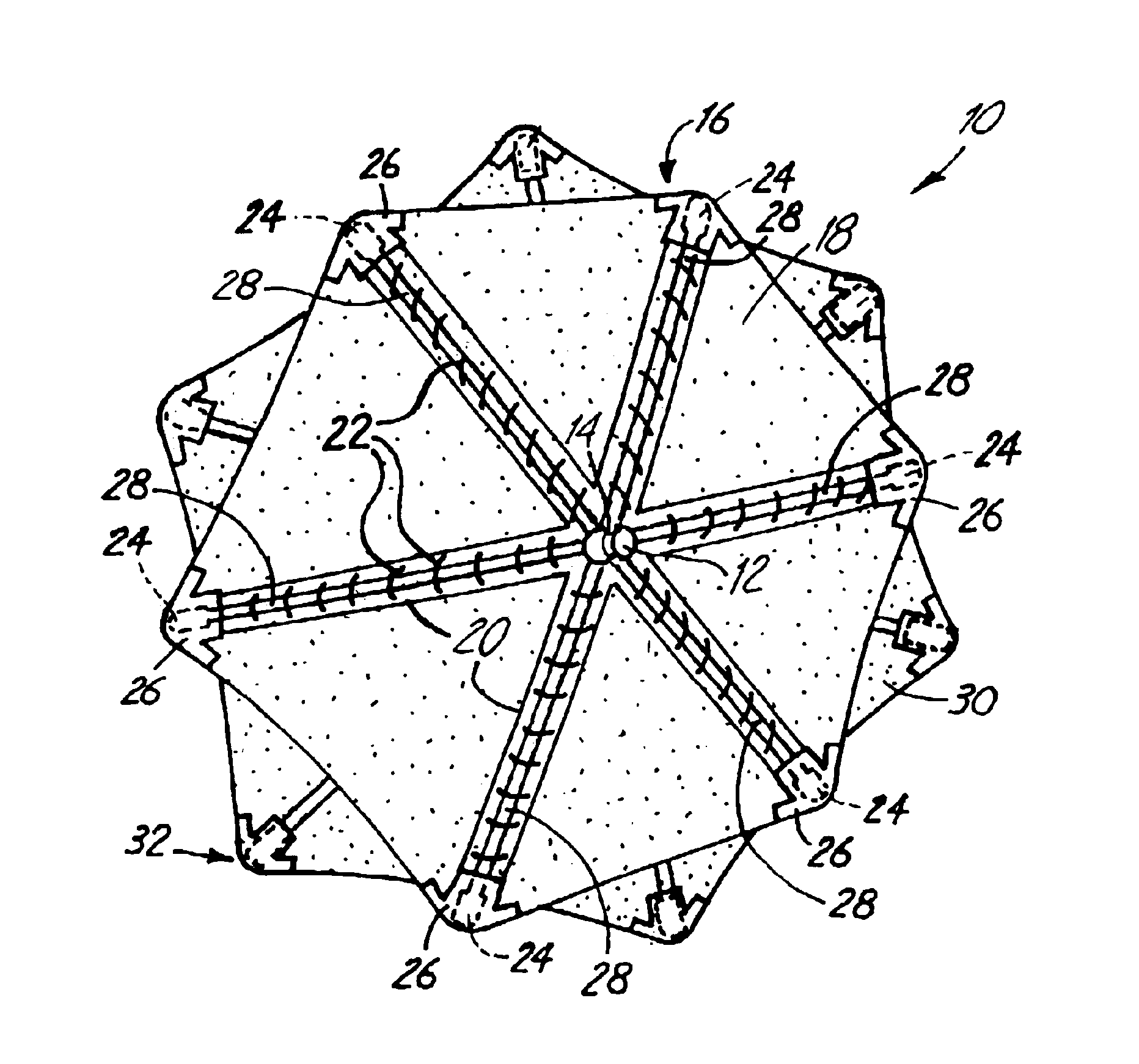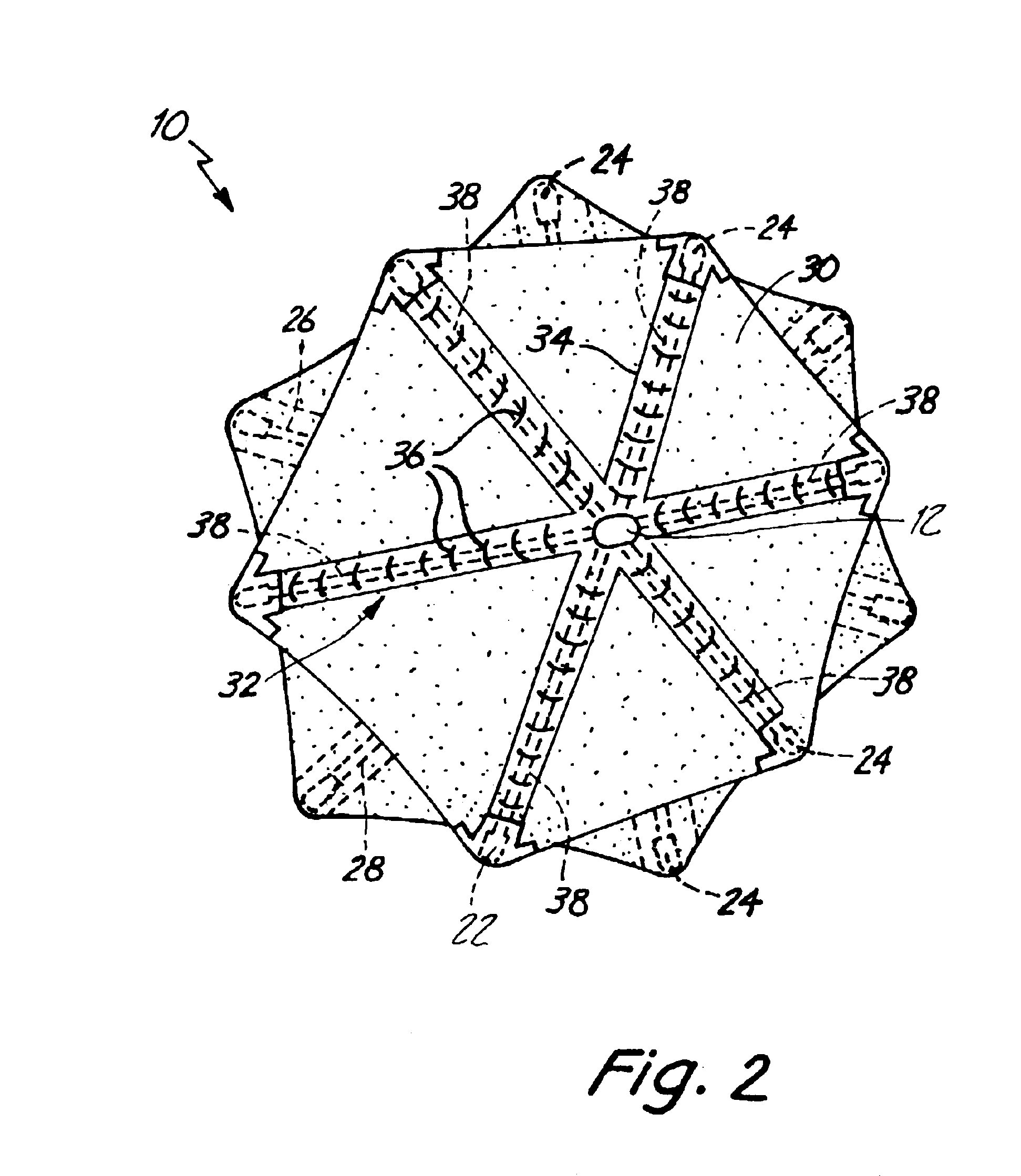Laminated sheets for use in a fully retrievable occlusion device
a fully retrievable, occlusion device technology, applied in the field of occlusion devices, can solve the problems of high risk, painful and costly procedures, difficult to design an occlusion device which adequately addresses all, and opens heart surgery
- Summary
- Abstract
- Description
- Claims
- Application Information
AI Technical Summary
Benefits of technology
Problems solved by technology
Method used
Image
Examples
Embodiment Construction
[0020]FIG. 1 is a top perspective view of one embodiment of an occlusion device 10. The occlusion device 10 comprises a center section 12 having a groove 14, a first fixation device 16, a first sheet 18, a first laminated area 20, sutures 22, atraumatic tips 24, and end patches 26. The first wire fixation device 16 comprises six wire arms 28, on the end of which are the atraumatic tips 24. The first laminated area 20 is located on the first sheet 18 and corresponds in shape to the first fixation device 16. The wire arms 28 are affixed to the first sheet 18 at the laminated area 20 via the sutures 22. The patches 26 cover the atraumatic tips 24. Also partially visible in FIG. 1 is a second sheet 30 and second fixation device 32.
[0021]FIG. 2 is a bottom perspective view of the occlusion device 10. Shown in FIG. 2 is the center post 12, second sheet 30, and second fixation device 32. The second sheet 30 comprises a second laminated area 34 and sutures 36. Similar to the first fixation ...
PUM
 Login to View More
Login to View More Abstract
Description
Claims
Application Information
 Login to View More
Login to View More - R&D
- Intellectual Property
- Life Sciences
- Materials
- Tech Scout
- Unparalleled Data Quality
- Higher Quality Content
- 60% Fewer Hallucinations
Browse by: Latest US Patents, China's latest patents, Technical Efficacy Thesaurus, Application Domain, Technology Topic, Popular Technical Reports.
© 2025 PatSnap. All rights reserved.Legal|Privacy policy|Modern Slavery Act Transparency Statement|Sitemap|About US| Contact US: help@patsnap.com



